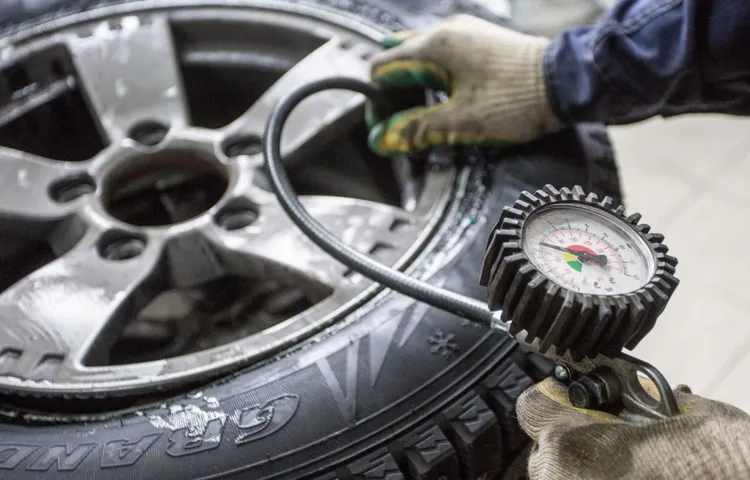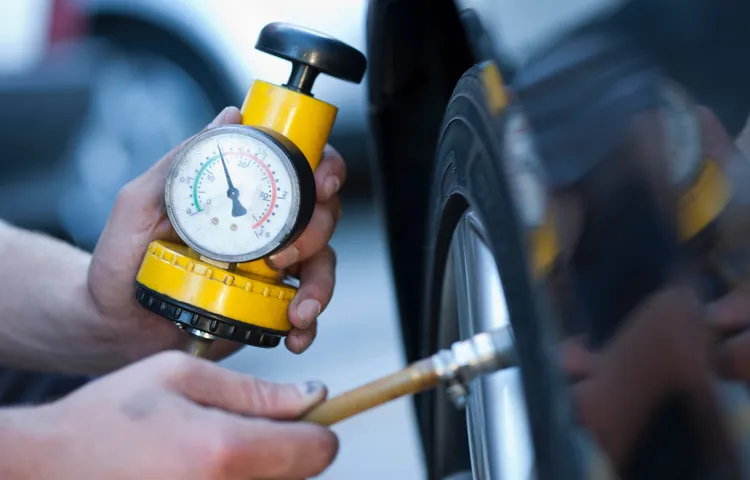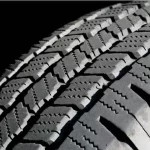Have you ever noticed that the tire pressure in your car changes with the weather? It’s a common phenomenon that many drivers experience, and it’s directly linked to temperature change. As the temperature outside fluctuates, the air inside your tires expands or contracts, resulting in a rise or fall in tire pressure. This, in turn, affects many crucial aspects of your driving experience, from handling and fuel efficiency to safety and tire lifespan.
in this blog, we’ll explore the fascinating effects of temperature change on tire pressure and how to address them.
Table of Contents
Understanding Tire Pressure
Have you ever wondered what happens to the pressure in your tires when the temperature changes? Well, the answer isn’t so straightforward. As the temperature increases, the pressure in your tires also increases. Conversely, when the temperature drops, the pressure in your tires decreases as well.
This is because as the air inside the tire gets warmer, the molecules inside the tire start moving faster, causing them to collide more frequently and with more force. This increased force exerts more pressure on the tire, raising the overall PSI. On the other hand, when the temperature drops, the air molecules inside the tire slow down, resulting in fewer collisions and less pressure.
So, to answer the question, the new pressure of the tire after a temperature change ultimately depends on the difference in temperature and the original pressure of the tire. It’s always a good idea to check your tire pressure regularly to ensure it’s at the correct level, especially if there have been any drastic temperature changes.
What is the Ideal Tire Pressure?
Tire pressure is the measure of how much air is in your tires, and it is essential to maintain the right level to get the most out of your driving experience. The ideal tire pressure depends on the type of vehicle and the type of tire you are using. Overinflating or underinflating your tires can be dangerous as it can cause steering issues and affect fuel efficiency.
To determine the ideal tire pressure, you can refer to the owner’s manual or the label found on the driver’s side door jamb, which specifies the recommended tire pressure for your car. Regularly checking your tire pressure and keeping it within the recommended range can help extend your tire’s lifespan and can even help save you money on fuel costs. Always remember that maintaining the correct tire pressure is a crucial aspect of car maintenance that should not be overlooked.

Why is Proper Tire Pressure Important?
Proper tire pressure is essential for ensuring safe and efficient driving. Having the correct tire pressure helps extend the life of your tires and prevents unnecessary wear and tear. It also improves fuel efficiency by reducing rolling resistance.
Moreover, maintaining the right tire pressure enhances vehicle handling and stability, providing a comfortable and smoother ride. Low tire pressure can cause the tire to overheat and potentially lead to a blowout, which is dangerous. Meanwhile, overinflated tires can affect the handling and traction of the vehicle, also causing undue stress on the tire.
Therefore, it’s crucial to check the tire pressure monthly and before long road trips. Always follow the manufacturer’s recommendation for the appropriate tire pressure printed in the owner’s manual or on the tire information placard located on the driver’s side doorjamb. By keeping your tires inflated to the right pressure, you can save on fuel costs, extend the life of your tires, and drive safely on the road.
How Temperature Affects Tire Pressure
When it comes to maintaining proper tire pressure, temperature plays a significant role in ensuring that our tires are performing optimally. As the temperature changes, the air inside the tire expands or contracts, causing the tire pressure to rise or fall. This means that if the temperature drops outside, our tire pressure will also decrease and vice versa.
For instance, if the new temperature drops by 10 degrees Fahrenheit, the tire pressure will reduce by 1psi. Therefore, the tire’s new pressure after the temperature change would depend on the difference between the air’s original temperature and the new temperature. To maintain the recommended tire pressure, especially during temperature fluctuations, it’s crucial to frequently check our tires and adjust accordingly.
Proper tire pressure ensures even tire wear, better fuel efficiency, and overall stability. It’s advisable to keep a tire pressure gauge in your car and inspect your tires regularly to ensure they’re performing at their best.
Understanding the Science Behind It
Temperature can have a significant impact on tire pressure. This is due to a scientific principle called the Ideal Gas Law, which states that the pressure of a gas increases as its temperature rises. Therefore, as the temperature outside increases, so too does the pressure within the tire.
Conversely, as the temperature drops, the pressure within the tire decreases. This is why it is critical to maintain proper tire pressure throughout the year, not just during the summer months. Low tire pressure can reduce fuel efficiency, increase the risk of a blowout, and even cause the tire to wear unevenly.
Overall, keeping an eye on tire pressure and making adjustments as needed can help ensure safe and efficient driving. So, always remember to adjust your tire pressure during extreme temperature changes.
What Happens to Tire Pressure in Cold Weather?
Tire pressure can be affected by various factors, and cold weather is one of them. As the temperature drops, the air inside the tire contracts and takes up less space than it would in warmer temperatures. This can result in a decrease in tire pressure, which can lead to handling and safety issues if not attended to promptly.
For every 10-degree drop in temperature, tire pressure can decrease by a pound per square inch (PSI). Therefore, it’s essential to check your tire pressure regularly during the colder months and ensure they are at the recommended levels. Keep in mind that underinflated tires can wear out more quickly and result in lower fuel efficiency.
Hence, it’s crucial to ensure you have the proper tire pressure in cold weather for safe, comfortable driving.
What Happens to Tire Pressure in Hot Weather?
The tire pressure of your vehicle can be affected by many variables, and temperature is one of the most significant ones. When the weather heats up, the air inside a tire also expands, which increases tire pressure and can lead to overinflation. Overinflated tires can be extremely dangerous and can cause poor handling, premature tire wear, and even blowouts.
On the other hand, when temperatures drop, the air inside the tire contracts and decreases the tire pressure, which can lead to underinflation. This can cause tires to wear out faster, reduce fuel efficiency, and also affect the handling of your vehicle. Therefore, it’s essential to monitor your tire pressure regularly and keep it in check, especially during extreme weather conditions.
A good rule of thumb is to check the pressure of your tires at least once a month and before long road trips to ensure your safety on the road.
Calculating New Tire Pressure After Temperature Change
If you’ve ever noticed a change in your tire pressure after a temperature change, it’s because of a fundamental law of physics: the Ideal Gas Law. This law states that pressure, temperature, and volume are all interrelated, and a change in one will affect the others. In this case, when the temperature changes, the air molecules inside the tire become more spread out, causing a drop in pressure.
Conversely, a rise in temperature will cause the molecules to become more tightly packed, which increases the pressure. To calculate the new pressure of your tire after a temperature change, you can use a formula involving the initial pressure, the initial temperature, the final temperature, and the gas constant. This calculation will take into account the change in volume and the number of gas molecules inside the tire, which determines the pressure.
By keeping an eye on your tire pressure and adjusting it after extreme temperature changes, you can ensure a safe and comfortable ride.
Using a Tire Pressure Calculator
If you’re looking to maintain the safety and longevity of your tires, then using a tire pressure calculator can be incredibly helpful. One common issue that drivers face is the effect temperature changes can have on tire pressure. As the temperature drops, the air inside the tire will contract, causing the pressure to decrease.
Conversely, on hot days, the air inside the tire will expand, increasing the pressure. In both cases, it’s essential to recalculate the tire pressure to ensure that it’s at the correct level. With a tire pressure calculator, you can quickly input your tire size, load rating, and current pressure, and it will give you an accurate reading based on the ambient temperature.
This way, you can ensure your tire pressure is optimal for every weather condition, making your driving experience smoother and safer. So don’t forget to check your tire pressure regularly and use a tire pressure calculator when necessary, to avoid any unexpected surprises on the road.
Manually Calculating New Tire Pressure
If you’ve recently changed the temperature of your tires, you’ll need to recalculate the tire pressure. This is important because the tire pressure affects your vehicle’s handling, fuel efficiency, and even safety. Fortunately, you don’t need any fancy equipment to do this – you can manually calculate the new tire pressure.
First, determine the pressure of your tires by checking the recommended psi (pounds per square inch) located on the sticker on your car door or in the owner’s manual. Next, measure the current temperature of your tires using a thermometer. Finally, use a tire pressure conversion chart to calculate the new tire pressure based on the temperature.
Remember to avoid overinflating or underinflating your tires, as this can cause uneven wear, poor handling, and even a blowout. By properly adjusting your tire pressure after a temperature change, you can ensure a smooth and safe ride for you and your passengers.
Conclusion and Tips for Maintaining Proper Tire Pressure
Well, if you’ve been keeping up with our tire saga, you’ll know that temperature can have a significant impact on our tire pressure. And while math and science may give us a precise answer to the question of what the new pressure is, let’s face it – sometimes life isn’t exact. So, to give a witty and clever explanation to what the new pressure of the tire is after a temperature change.
.. drumroll please.
.. it depends! But no need to fret, just make sure to keep an eye on your tire pressure and adjust accordingly, because as we all know, a properly inflated tire is key to a smooth and safe ride.
Happy driving!”
FAQs
1. What happens to tire pressure when the temperature changes? A: Tire pressure increases with a rise in temperature, and decreases with a drop in temperature. 2. How can you measure the pressure of a tire? A: You can check the pressure of a tire using a tire pressure gauge or a digital tire pressure monitor. 3. What are the consequences of having incorrect tire pressure? A: Incorrect tire pressure can lead to reduced fuel efficiency, increased tire wear, and decreased braking and handling performance. 4. Is it safe to drive on underinflated tires? A: It is not safe to drive on underinflated tires, as it increases the risk of a blowout or a loss of control while driving. 5. Can overinflated tires cause damage to a vehicle? A: Overinflated tires can cause damage to a vehicle by creating a harsher ride, reducing traction, and wearing out the center of the tread faster. 6. How often should you check the tire pressure of your vehicle? A: It is recommended to check the tire pressure of your vehicle at least once a month, or before any long trips. 7. What is the correct tire pressure for my vehicle? A: The correct tire pressure for your vehicle can be found in the owner’s manual, on a sticker located on the driver’s doorjamb, or by consulting with a tire professional.



